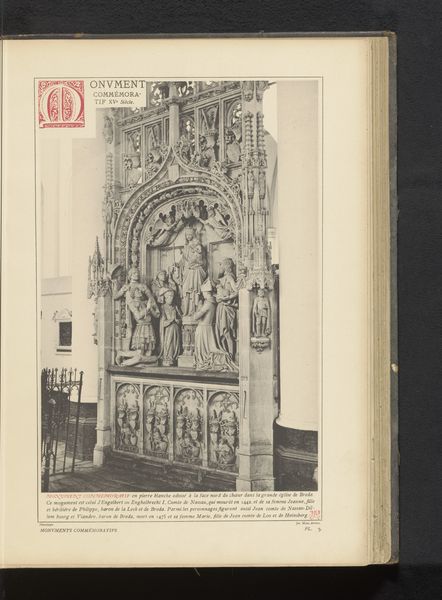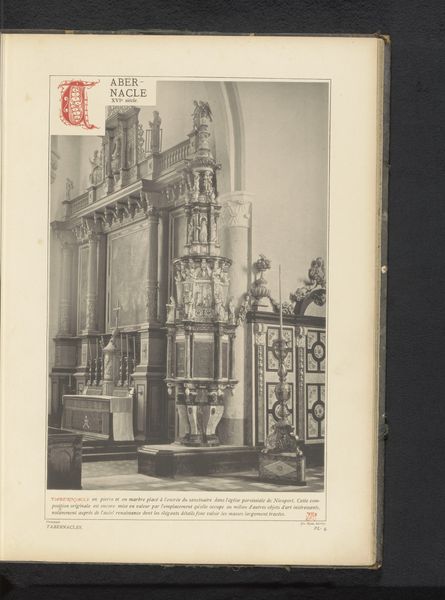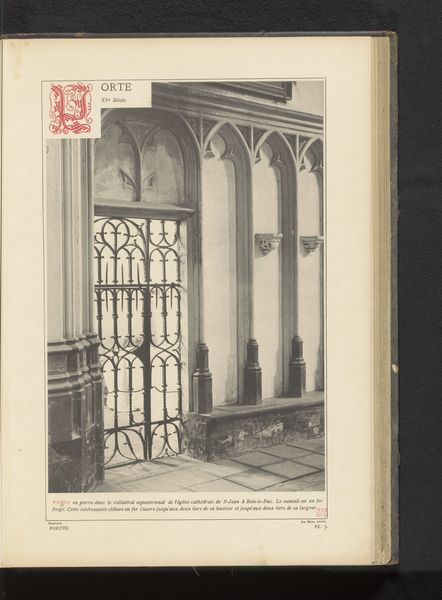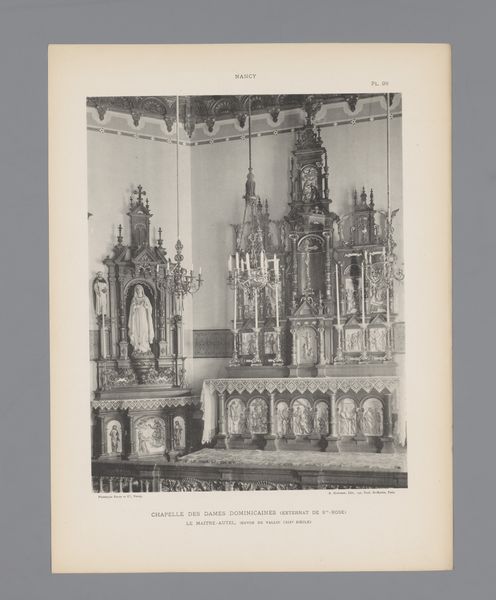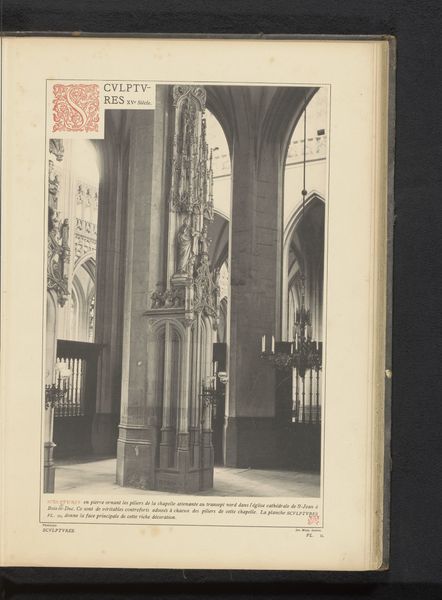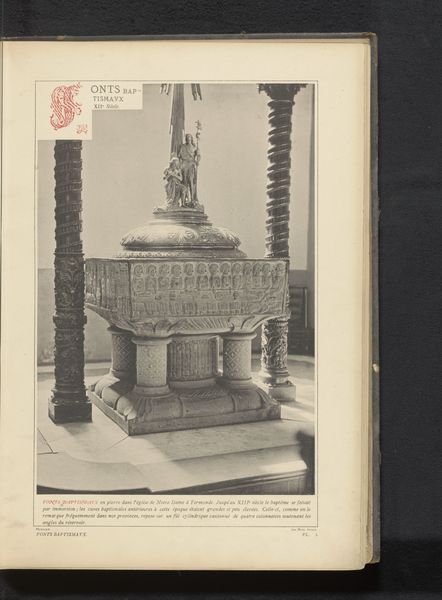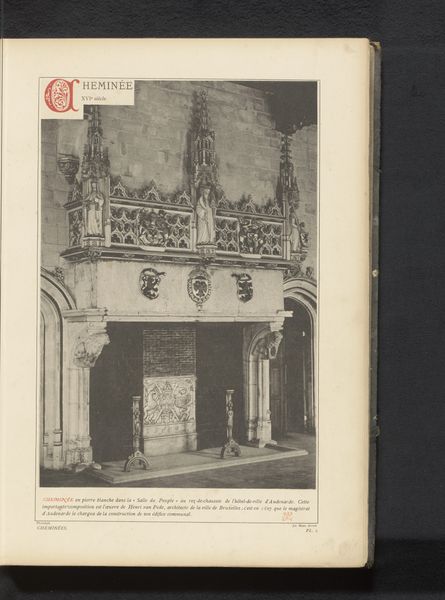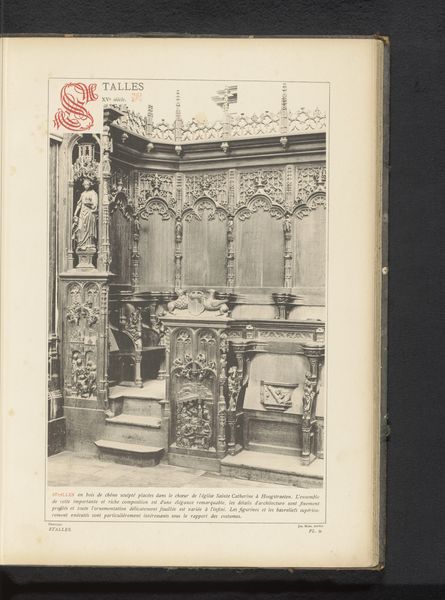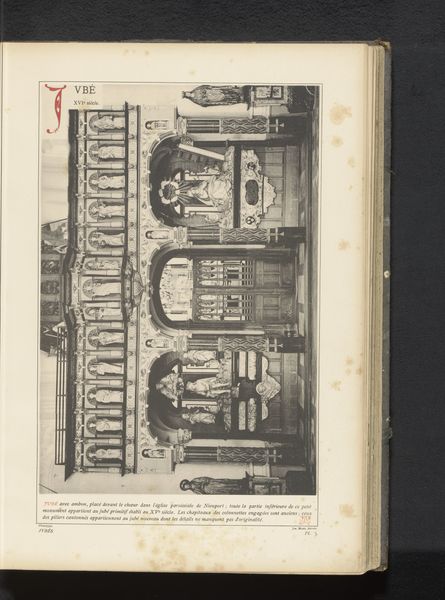
print, photography, engraving, architecture
#
portrait
#
medieval
# print
#
photography
#
engraving
#
architecture
Dimensions: height 341 mm, width 236 mm
Copyright: Rijks Museum: Open Domain
Curator: The somber dignity conveyed in this photographic print is striking. Before 1889, an anonymous artist captured "Gestoelte in het stadhuis te Nijmegen," which translates to seating in Nijmegen's city hall. I'm immediately drawn to its imposing presence—the scale is so impressive. Editor: There’s an austerity to it, absolutely. But look closer—that architectural space depicted signifies much more than just structural elegance, particularly for such a historic image. It evokes the systems of power and justice that permeated that space. Curator: You're right, the interplay of light and shadow, and the linear repetition of the carved panels creates an austere geometric design. There is so much detailed engraving. The eye is led vertically from floor to the statues topping the seats, emphasizing verticality and height. Editor: And who occupied these meticulously carved seats? What decisions were made there? The architecture itself subtly suggests themes of judgment and institutional authority that often marginalize segments of society, even if they appear neutral on the surface. Those statues seem to silently condone actions—good or bad—over the centuries. Curator: I am intrigued by the use of photographic technology in what appears to be medieval space, that kind of juxaposition of modern art mediums with traditional, nearly medieval spaces. The high-backed seats and the stone sculptures… it is difficult to get one’s bearings. Editor: Agreed. Plus, we’re looking at the remnants of social architecture rooted in oak that are imbued with symbolic meaning and serve to remind people who exactly are in charge, then and now. Consider the intended purpose of that engraving within a broader socio-political context to truly unlock what that space symbolizes. Curator: True, yet I think focusing only on a contextual interpretation diminishes the composition, texture, and skillful execution that make it so captivating. I see how those things give historical context to it, too, not just as political and social commentary but as artistic technique. Editor: That said, there are many other levels to the work that make a much deeper and often more vital argument about historical hierarchies, which would be important in evaluating this piece further.
Comments
No comments
Be the first to comment and join the conversation on the ultimate creative platform.
